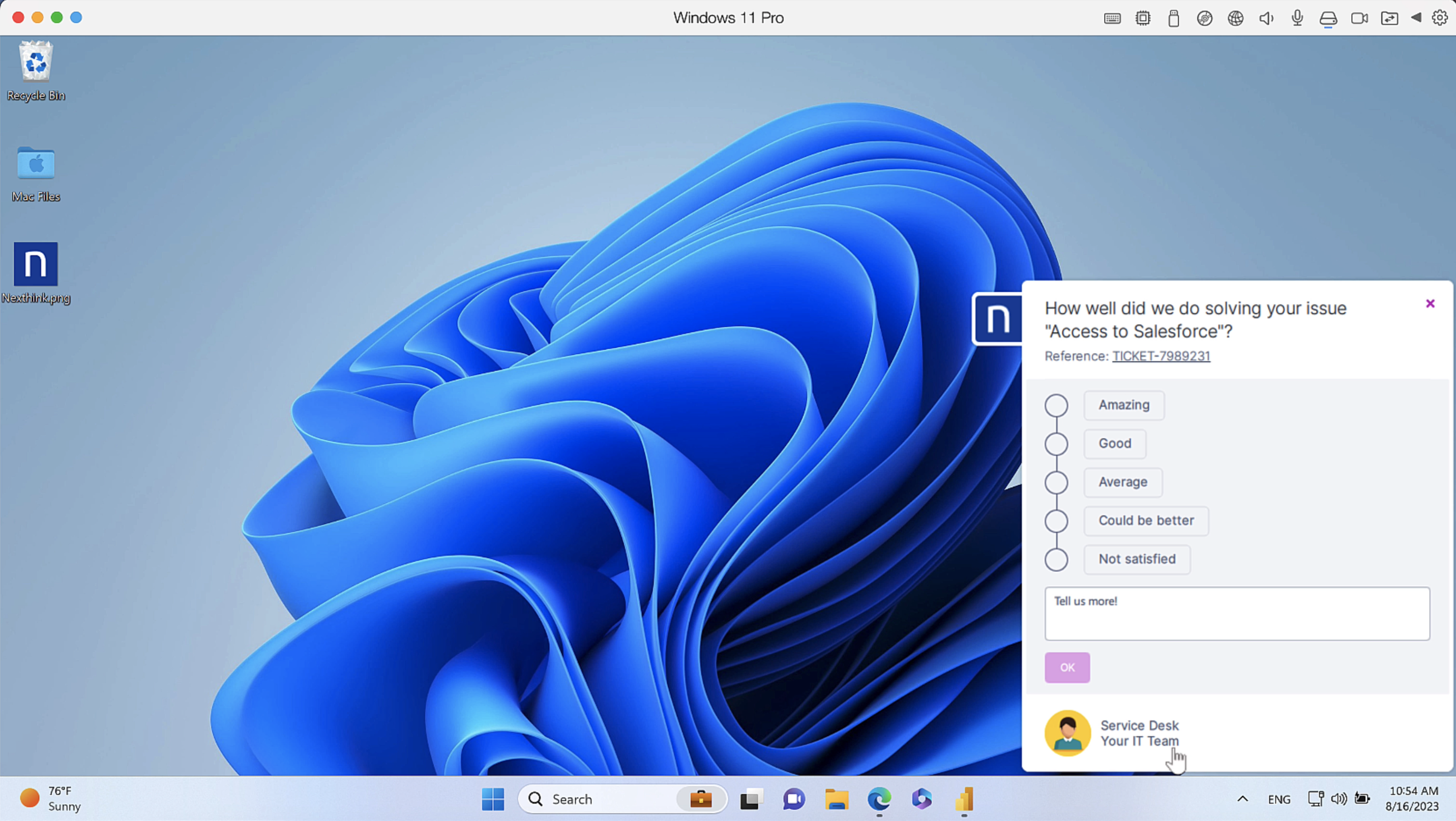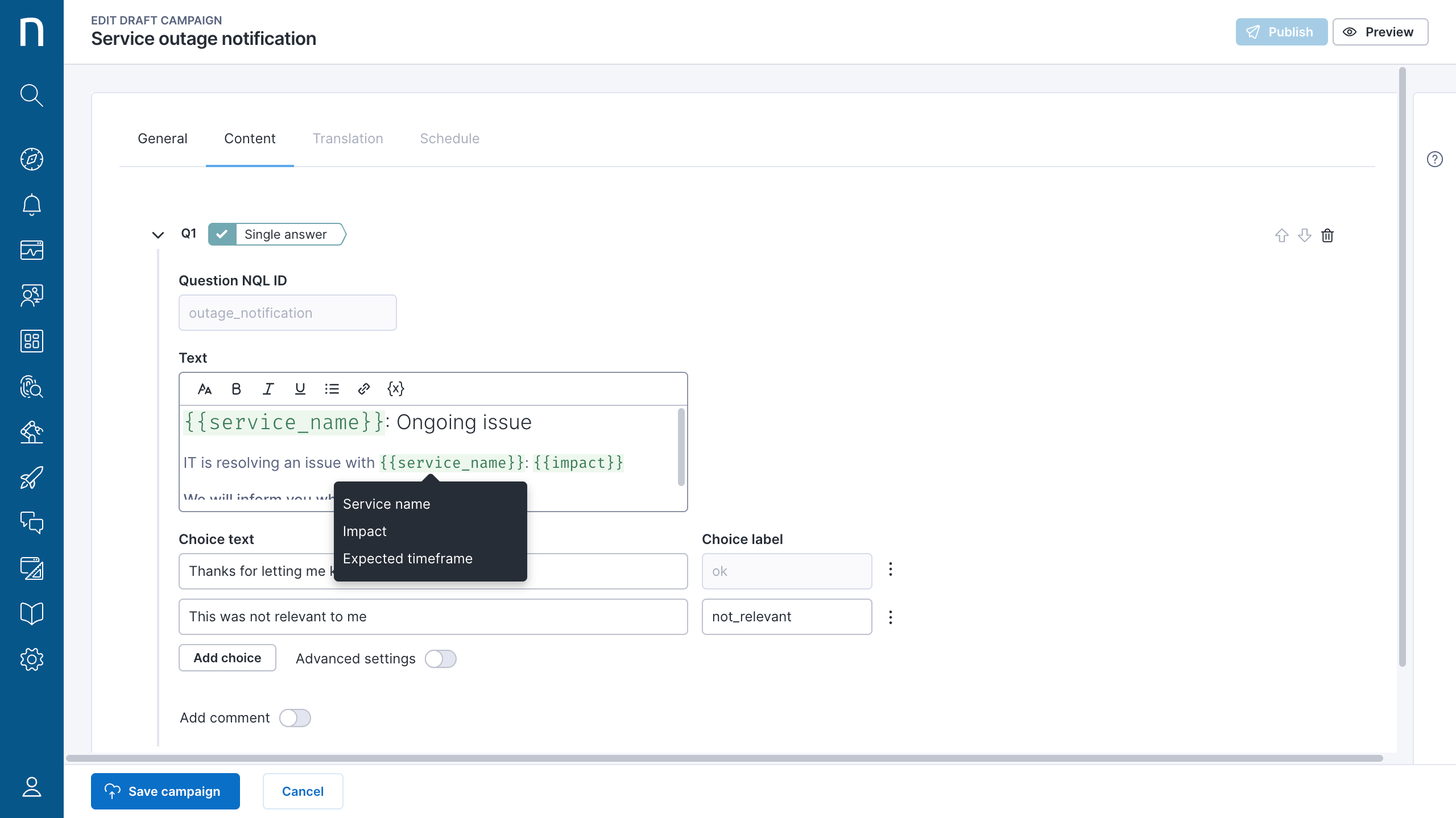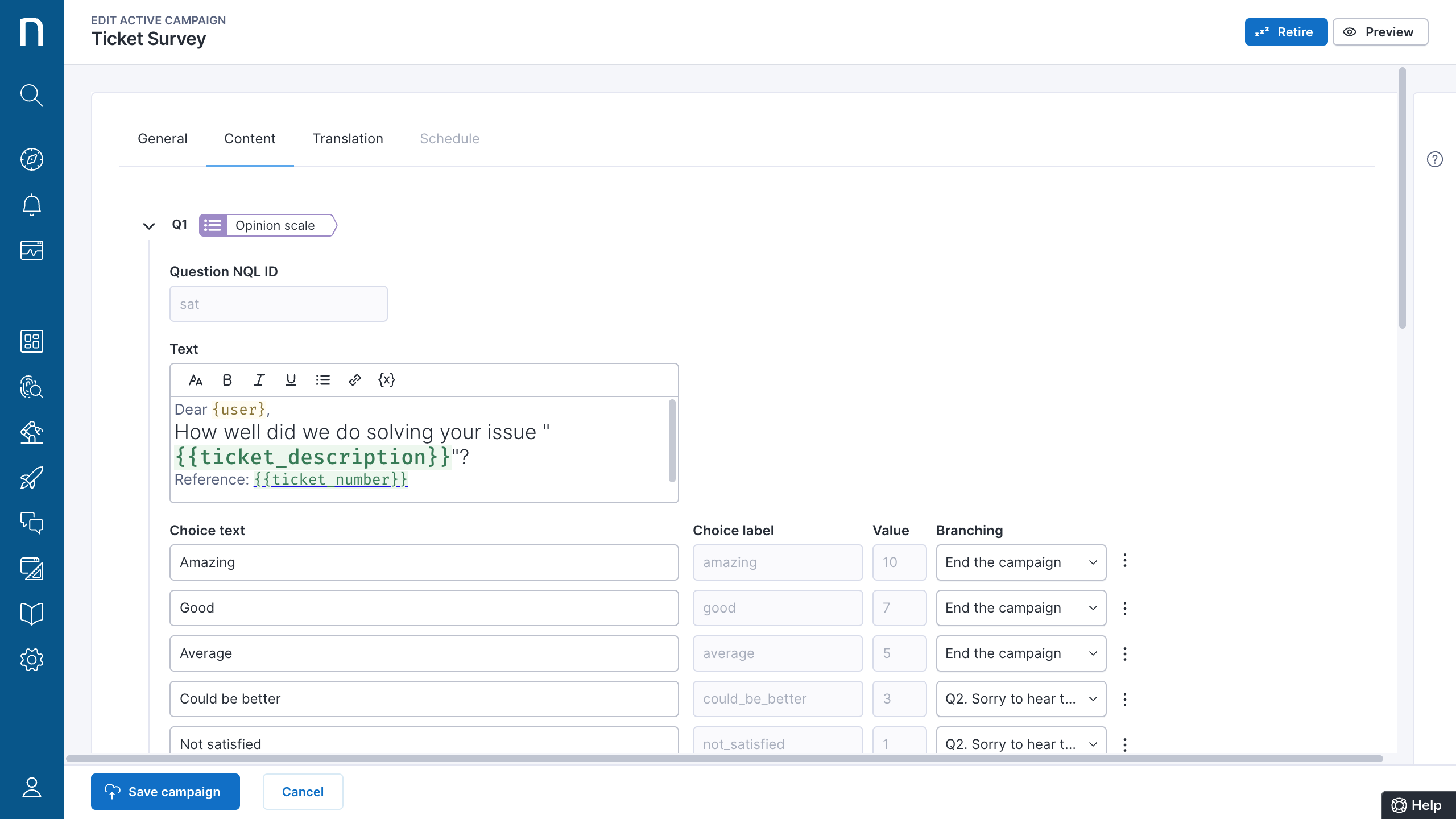In today's digital workplace, IT-employee engagement is crucial for communicating timely information, fixing issues collaboratively, and understanding employees’ experience with technology. At Nexthink, we have met this evolving need with our investments in engagement campaigns. And now, we are pleased to introduce the newest innovation to connect IT and employees: parametric campaigns.
Parametric campaigns are a major step toward more personalized, engaging, and actionable IT-employee communications. In this blog post, we’ll explore what parametric campaigns are, key use cases for them, and share information on how to get started to add a new dimension to your employee engagement.
The Value of Parametric Campaigns
Parametric campaigns allow for the incorporation of variable data points (parameters) into campaign messaging, which can be API-triggered or manually initiated. A parameter could be a range of things: a ticket number, an issue description, a device or service name, a URL. These can be embedded directly within a campaign’s text and made visible to an end user upon delivery.
Rather than simply asking about an employee's service desk experience, you could ask how their experience was on XYZ ticket. Instead of sending a generalized survey or notification, you could articulate details within a message that relate specifically to the individual. And instead of creating individual campaigns for, say, every outage notification, you could create a template campaign that is ready to be sent out quickly, where parameter placeholders can be easily customized.
This capability goes beyond traditional engagement methods like email feedback surveys, providing IT with unprecedented context and specificity in communications to employees. This results in campaigns that resonate better with employees, leading to improved response rates and more precise and insightful feedback. Ultimately, parametric campaigns lead to more effective employee engagement strategies.

Key Use Cases for Parametric Campaigns
There are various ways that parametric campaign functionality can be put into practice. Here are some common use case examples that are fast and easy to implement:
- Service Desk Ticket Satisfaction: Post-ticket closure, a campaign can be triggered via API, using parameters for ticket number and description, to gauge satisfaction levels.
- Customizable Outage Notifications: Parameters can be used for outage impact and affected service in campaigns triggered manually or via API.
- Asset Return Notifications: For scenarios like asset renewal or employee departure, API campaigns can be triggered with parameters like asset number, name, and return date.
- IT Infrastructure Upgrades: When IT infrastructure is upgraded, use parameters to ask targeted questions about the upgrade experience, including the specific systems and version numbers.
- Onboarding Feedback: New hires can receive customized campaigns asking for feedback on their onboarding experience. Parameters can include specific sessions they attended, tools they were trained on, or the name of their mentor.
Setting Up Parametric Campaigns
1. On the New Campaigns Draft page, under the General tab, choose either Manual or API under Trigger
2. Enable the Parameters toggle button.
3. Add Parameter Details by specifying its Name, ID (for use in NQL queries and API campaigns), and a descriptive note for easier identification.

Using Parameters in Campaign Questions
When configuring campaign questions, you can insert parameters in the question text by clicking on the {x} button and choosing the parameter from a list.
Manual Campaigns Example: In manually triggered campaigns, parameters like {{service_name}}, {{impact}}, {{timeframe}}, and {{incident_id}} can be used, with values provided at the time of campaign initiation.

API Campaigns Example: For API-triggered campaigns, parameters such as {{ticket_description}} and {{ticket_number}} can be incorporated, aligning with information used by the third-party system, such as ITSM, ITAM or custom-built solutions.

Drive Targeted & Personalized Engagement With Nexthink
Nexthink parametric campaigns mark a significant advancement in creating more personalized and contextually relevant communications with employees. The depth and precision of data collection enabled by Nexthink are simply unmatched. And by leveraging specific, context-rich parameters within campaigns, you can not only boost campaign relevance, but also foster more attentiveness and responsiveness from your employees, signaling to them that their experiences and opinions are valued on a personal level.
Ultimately, employee engagement is about creating a workplace where every employee matters and every piece of feedback can lead to improvement. In that way, Nexthink campaigns aren’t just tools for engagement for engagement’s sake—they're tools for creating smarter digital workplaces, one employee at a time.